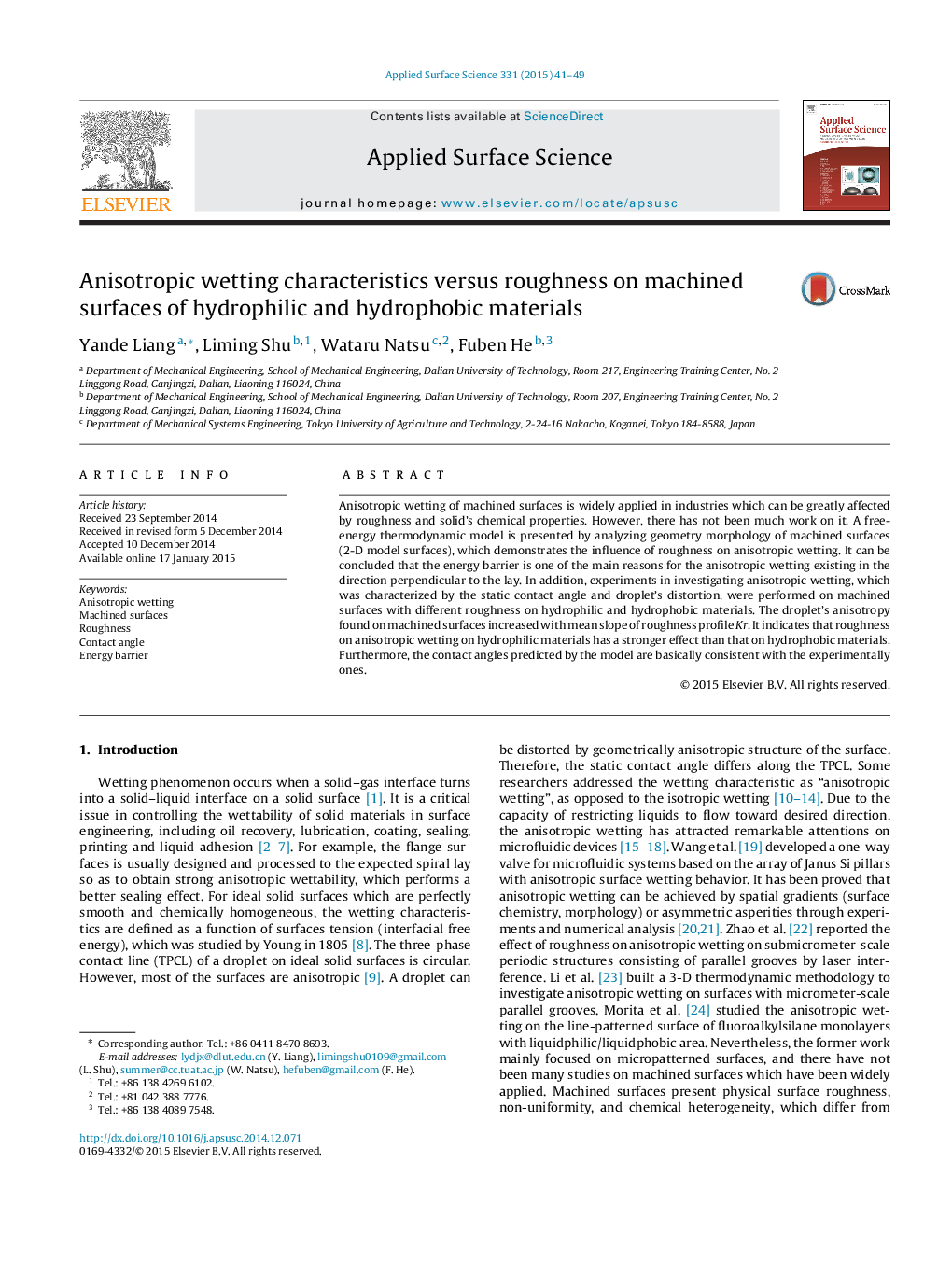| Article ID | Journal | Published Year | Pages | File Type |
|---|---|---|---|---|
| 5359043 | Applied Surface Science | 2015 | 9 Pages |
â¢The aim is to investigate the influence of roughness on anisotropic wetting on machined surfaces.â¢The relationship between roughness and anisotropic wetting is modeled by thermodynamical analysis.â¢The effect of roughness on anisotropic wetting on hydrophilic materials is stronger than that on hydrophobic materials.â¢The energy barrier existing in the direction perpendicular to the lay is one of the main reasons for the anisotropic wetting.â¢The contact angle in the parallel direction is larger than that in the perpendicular direction.
Anisotropic wetting of machined surfaces is widely applied in industries which can be greatly affected by roughness and solid's chemical properties. However, there has not been much work on it. A free-energy thermodynamic model is presented by analyzing geometry morphology of machined surfaces (2-D model surfaces), which demonstrates the influence of roughness on anisotropic wetting. It can be concluded that the energy barrier is one of the main reasons for the anisotropic wetting existing in the direction perpendicular to the lay. In addition, experiments in investigating anisotropic wetting, which was characterized by the static contact angle and droplet's distortion, were performed on machined surfaces with different roughness on hydrophilic and hydrophobic materials. The droplet's anisotropy found on machined surfaces increased with mean slope of roughness profile Kr. It indicates that roughness on anisotropic wetting on hydrophilic materials has a stronger effect than that on hydrophobic materials. Furthermore, the contact angles predicted by the model are basically consistent with the experimentally ones.
Graphical abstractDownload full-size image
